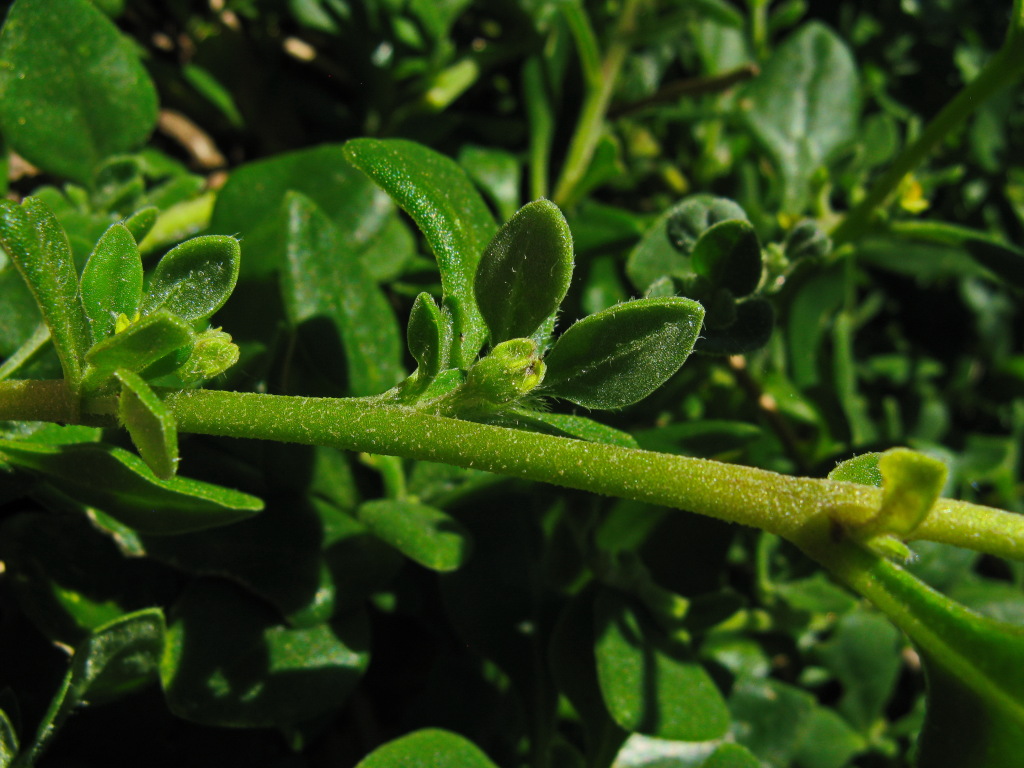Tetragonia implexicoma
(Miq.) Hook.f. Bower SpinachProstrate, sometimes mound-forming, trailing or climbing subshrub with branches to 3 m long or more. Leaves rhombic to angular-ovate, 1.5–6 cm long, 8–40 mm wide, papillose, semisucculent, sometimes shortly hirsute when young; petiole to c. 20 mm long. Flowers solitary, rarely paired, strongly scented; pedicels slender, shortly hirsute, 5–30 mm long; perianth segments 4–5(–6), oblong, 2–3 mm long, shortly incurved at apex, yellow on inner face, hirsute outside; stamens 12–20 (usually c. 16); styles 2, rarely 3. Fruit subgloboid to c. tetrahedral, 5–8 mm long, succulent, bony within; seeds 1–3, asymmetrically ovoid, pale brown, c. 3 mm long. Flowers mainly Aug.–Nov.
GleP, Brid, VVP, GipP, OtP, WaP, CVU, GGr, EGL, WPro, OtR, Strz. Also WA, SA, NSW, Tas. Common along the coastline on cliffs, dunes and in foreshore scrubs. Occasionally extending inland along tidal or slightly brackish watercourses (e.g. lower Glenelg River, Werribee River near Bacchus Marsh).
Plants from Warrnambool area and westwards tend to have thicker, fleshier, more papillose leaves which are more densely hirsute when young than those of plants from the east.
Heenan, P.B. (2022). Taxonomy with an absence of evidence results in unnecessary nomenclatural change: the case of Tetragonia trigyna Banks & Sol. ex Hook.f. (Aizoaceae) from New Zealand. New Zealand Journal of Botany 60(2): 169-183.
Walsh, N.G. (1996). Aizoaceae. In: Walsh, N.G.; Entwisle, T.J., Flora of Victoria Vol. 3, Dicotyledons Winteraceae to Myrtaceae, pp. 105–119. Inkata Press, Melbourne.
 Spinning
Spinning



